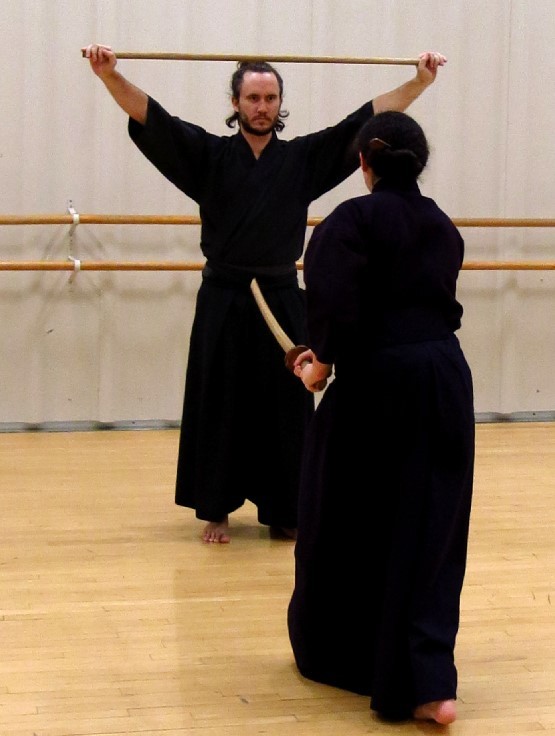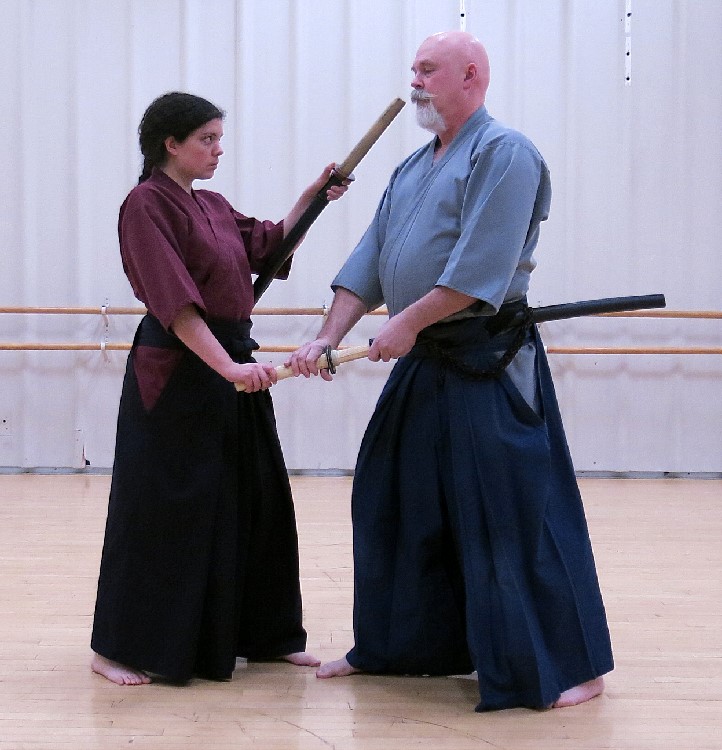SDKsupplies
There seem to be a lot of misconceptions about what kata are in budo training, especially in Japanese martial arts. Japanese martial arts kata are not practice fighting. They are not what fighting is or was. Martial arts kata do not simulate combat conditions. They do not recreate actual combat scenarios. If kata aren’t any of these things, then what are they, and why do we bother with them?

Kata are pre-arranged training sequences. They are training scenarios for learning about essential elements of conflict. I train in both classical and modern Japanese martial arts, and both use a lot of kata. Classical arts tend to focus almost entirely on kata training. Gendai arts like Judo use a combination of formal kata training, randori/sparring, and informal kata that are usually called something else (training drills, pattern practice, etc.)
Kata are not for mimicking combat. Kata are for getting better at conflict. They are a training tool for learning the skills necessary for dealing with combat. This form of training, and many of the kata themselves, have survived hundreds of years of use and practice because they work. As a training tool, they provide a framework for practicing various aspects of combat, not just repeating techniques or practicing in a sparring situation where much of what is effective is not acceptable because of the risk of injury.
Kata is not sparring, and with good reason. All sparring assumes a dueling scenario, with 2 people faced off and fighting. Any equipment is equal. There are no surprises, no unexpected changes. There is an assumption of fairness. Kata is not handicapped by any of these of these assumptions. Kata allows a much broader investigation of conflict conditions.
Classical martial arts kata generally start out simple, but they rarely assume anything is fair or equal. Araki Ryu Kogusoku is famous for one of the first kata taught to its students. It assumes asymmetrical armament (tori has a tray, uke has a tanto), and applies surprise to defeat the better armed opponent. There is nothing fair about this situation. It is unfair and tricky and applies deception. Just like a lot of conflict in real life. Sparring is worthless for learning these lessons.
The kata of Kodokan Judo, unlike the games of Olympic Judo, rarely assume anything is fair or balanced. The Kime No Kata is a great example. It is a set of kata of encounters between two people. One person, always unarmed, is attacked in sequence in a variety of scenarios. First the two are kneeling facing each other, as if talking, and one, uke, attacks the other in a variety of unprovoked and basically surprise attacks. Then uke attacks from the rear. After that there are a succession of attacks with a knife, from the front and side. Then they stand up and there are unarmed attacks from the front, side and rear, followed by attacks with knife, stick and sword.Sparring is extremely limited in many important ways that kata is not. In all of these jujutsu kata, the only thing the person being attacked, nage in Judo terminology, knows is what attack is coming. They don’t know when, or how fast, or from what range, or how strong the attacks will be. Uke has complete control over these.
One complaint sparring enthusiasts often make about kata is that you always know what attacks are being made, so it’s never a surprise. The same is true in sparring as well. In sparring a very small set of techniques are allowed, and the vast majority of possible attacks are excluded under the rules. On top of that, in sparring the attacks are always coming from the front, eliminating the most dangerous angles that attacks originate from. Since it represents such a tiny fraction of possible encounters and techniques, sparring seems quite overrated as a training method for anything except sports encounters.
Another thing, kata isn’t completely prearranged. Kata leave a lot of room for changes in range, timing and rhythm. In koryu bugei systems, the uke is always supposed to be the senior, more experienced person. It’s uke’s job to control the speed of the kata so their partner is always learning and being pushed into new territory. In addition, just because we know exactly which attack is coming doesn’t mean handling the attack is easy. No one tells uke when he has to attack. Uke gets to decide the exact moment of the attack, its speed and intensity. I have had uke’s drive me completely helpless just by drawing out the attack a little bit and then drawing me into responding at a different rhythm and speed than they attack with. This left me wide open with a big stick incoming at speed and completely unable to do anything about it.
Kata isn’t locked into one interpretation. Uke’s job is to adapt the kata’s speed, intensity and range to the student’s level so they learn as much as possible from the training. Kata also isn’t locked into just one uke. If you train with many different uke, each will bring different things to the training, things that make each practice of the kata unique. Different sizes, heights, strengths, speeds and levels of experience in each uke all combine to change the kata every time you do it.
Once you’ve got a kata’s basic shape, you should be exploring it. A training partner and I were working on a kata recently, and we wondered if there were any good responses to a particular situation besides the one specified within the kata, so we explored. We tried different movements, different responses, and quickly worked out why the one in the kata is the best possible response. Whenever we tried something different, the attacker was left with great new openings that were very difficult to cover. We learned a lot about a couple of weaknesses and openings we didn’t even realize existed.

Kata isn’t some dead, fossilized thing that you trot out to see how things were done at some time in the past. Kata are vital and alive and being changed and adapted all the time. No one says you and your partner can’t decide to try the kata differently and see what an appropriate response would be if you change one element. The creation of kata isn’t over either. People are creating new kata all the time. Most new kata don’t end up being preserved and passed on, but sometimes the kata have enough value that they are added to their system. The history of styles like Eishin Ryu and Shinto Muso Ryu show how things were added to these systems down through the centuries. Gendai budo do the same. Kodokan Judo didn’t create the Kodokan Goshin Jutsu until the 1950s. Over time, kata get tested, and the worthwhile ones are kept and passed on, while the others are dropped and forgotten.
Kata are a teaching method for practicing the most fundamental and important aspects of conflict. They are a time tested method that allows you to practice all sorts of dangerous attacks and defenses in a controlled manner. Kata allow attacks from every angle at all sorts of speeds and force levels, and they allow that practice in all sorts of asymmetrical match-ups. Kata give practitioners the opportunity to practice these match-ups at a variety of speeds, strengths and intensities, so they can grow and their skills progress.